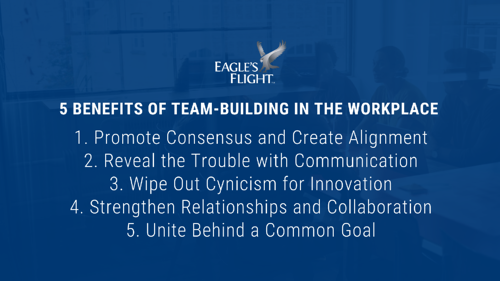Individuals who communicate effectively can achieve far more than those who give confusing feedback or struggle with an awkward communication style or poor message delivery. It’s one of the reasons most organizations list strong communication skills among the competencies one working in the modern workforce needs to be hired or secure a promotion. In a survey conducted by the National Association of Colleges and Employers (NACE), employers rated verbal communication skills as the most important skill sought in job candidates.
Strong communication is more than a buzzword. It’s a powerful tool that can make a difference in an individual’s overall performance. To become effective communicators, individuals need to master a range of communication techniques and behaviors; one of which is patience.
What Does It Mean to Have Patience in the Workplace?
Someone who has patience in the workplace has both the ability to listen and the ability to deliver the message directly to the intended recipient in a way they fully understand and connect with.
These two skills are very closely linked. If you have the ability to let the person finish speaking through until they are done, without interrupting, then you will be able to understand more clearly what’s on their mind and why they feel the way they do. When you interrupt you cause them to change direction, and then respond to what you said rather then finish what it was they were about to say. The better you understand what they were thinking, the better you are able to respond to them where they are.
Alternatively, when you’re speaking and they interrupt, let them! This gives you additional information as to where they are coming from, and what’s really important to them. This is difficult when we want to finish what we are saying, but if effectiveness is your objective then it is more effective to let them interrupt than to finish what you have to say. What they’re really thinking about is what they’re going to say when you’re done anyway.
As we grow to appreciate the importance of really effective communication, rather than simply the sense of relief we feel when we’ve said what we want to say, even if it’s not been heard as well as we would like, then we should be willing to be patient. This patience when listening, or patience when being interrupted, pays big dividends if you are then able to better understand your listener and tailor your message accordingly.
Developing Patience Through Training
Communication skills influence how employees interact with each other and with customers, as well as how they approach problems and deliver feedback. Improving communication may involve some simple concepts, but achieving it will be a challenge if individuals don’t know how or what to change.
Training that provides the necessary communication skills and knowledge will help employees at every level of the organization become effective communicators and show patience to their colleagues, superiors, and direct reports. It is not a skill that employees can learn by just reading, watching a video, or listening to a presentation about it. Instead, employees need opportunities to learn how to become better communicators by doing, and what better way to do this than by learning through experience, otherwise known as experiential learning. Experiential learning teaches skills and behaviors by presenting individuals with a low-risk opportunity to learn and practice face-to-face techniques in an engaging experience that seems completely unrelated to their lives at work. By engaging in experiential learning, individuals begin to understand why the skills and knowledge being trained are so important in the workplace, how to improve them, and how to apply what they’ve learned back on the job.
Mastering excellent communication requires patience. Both patience as the organization who wants to see it developed in its people, but patience as the one who is communicating with others every single day. Though through intentional effort on implementing practical training solutions, organizations can make this a reality.














